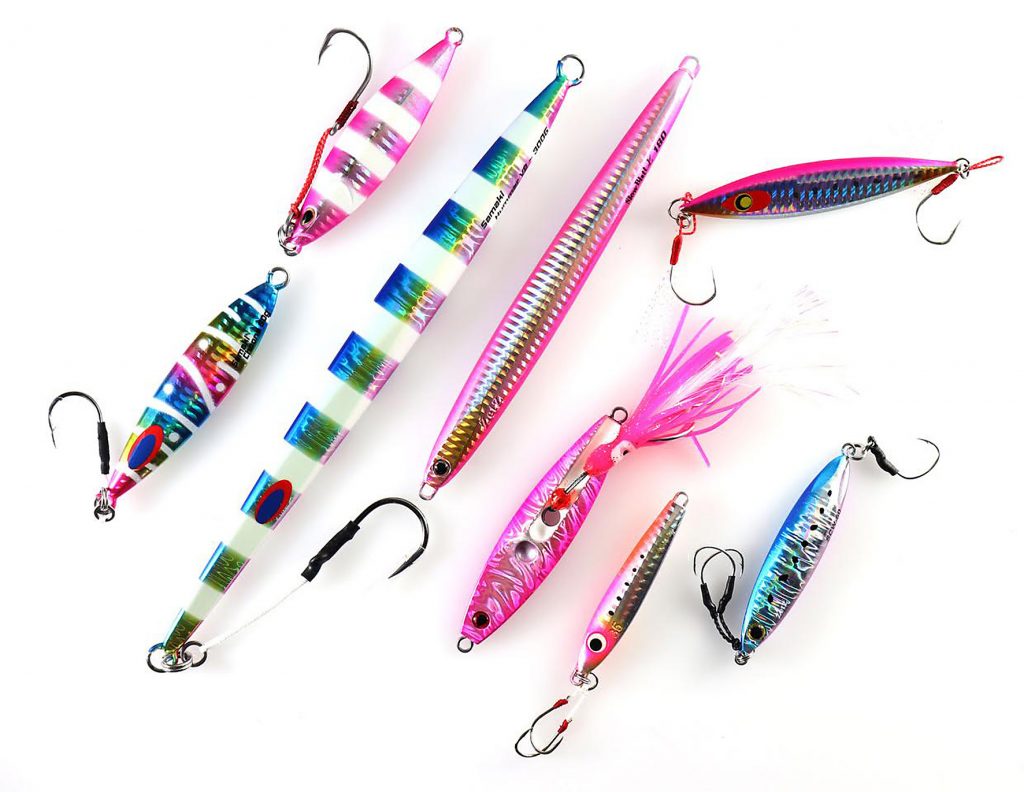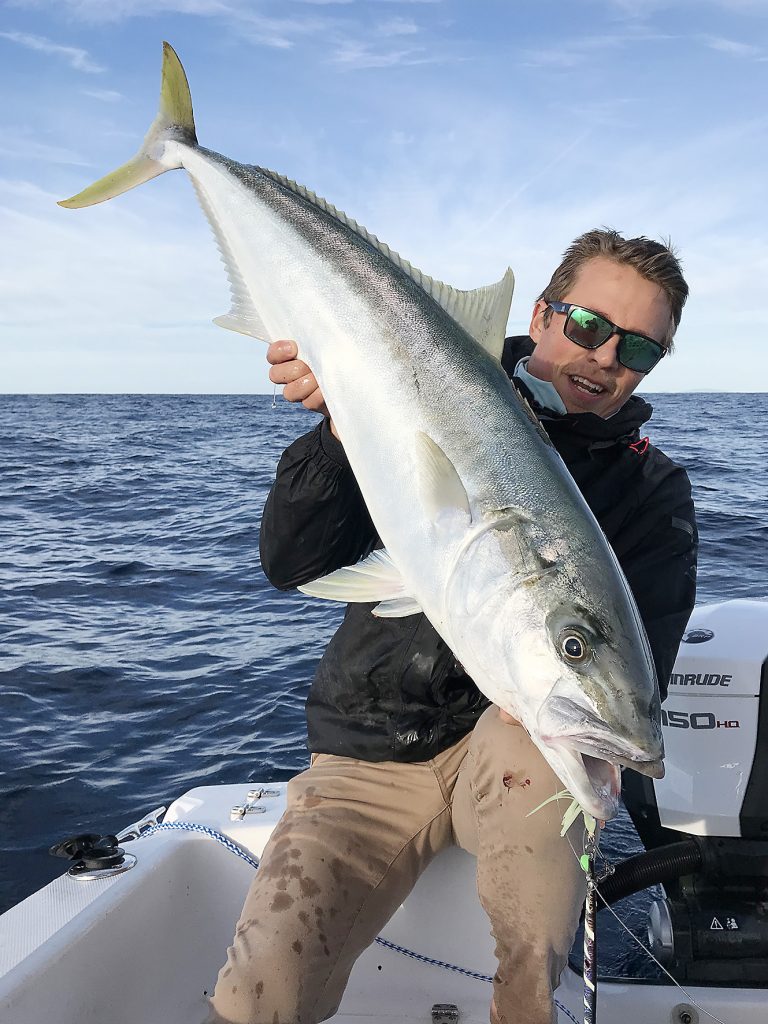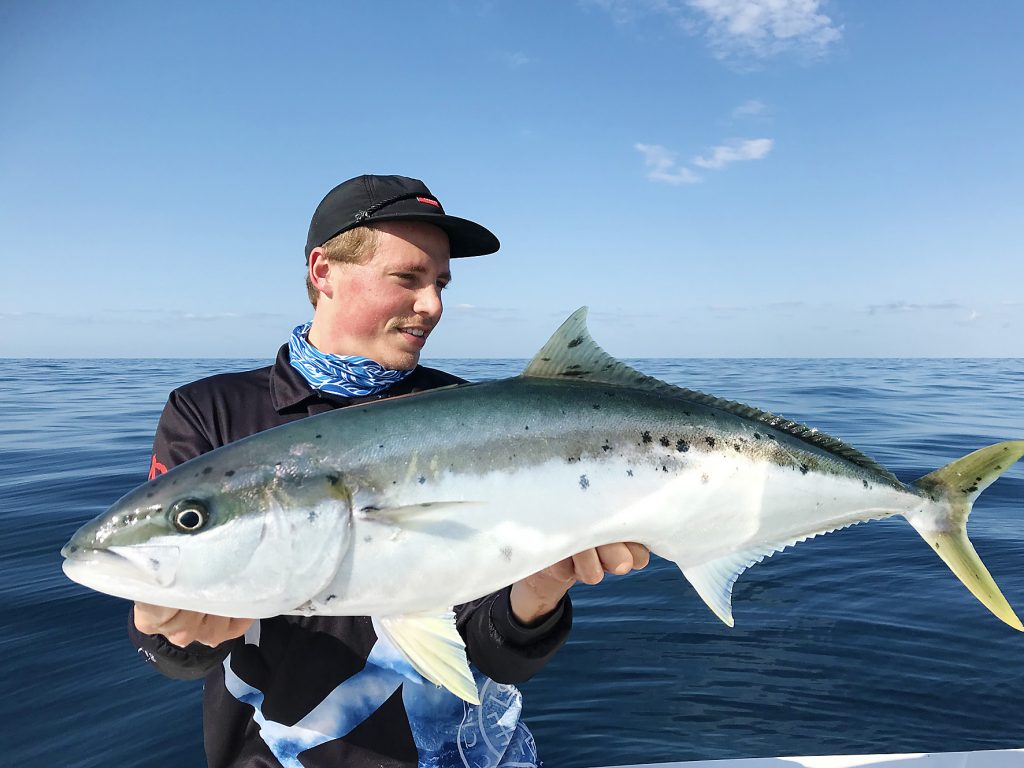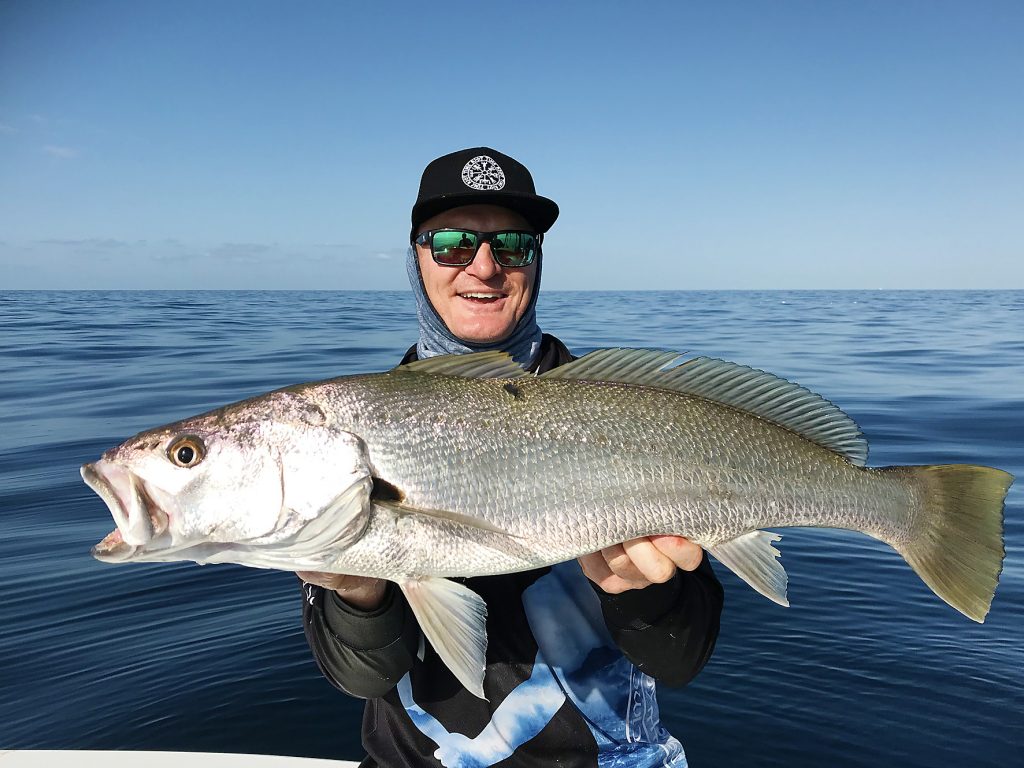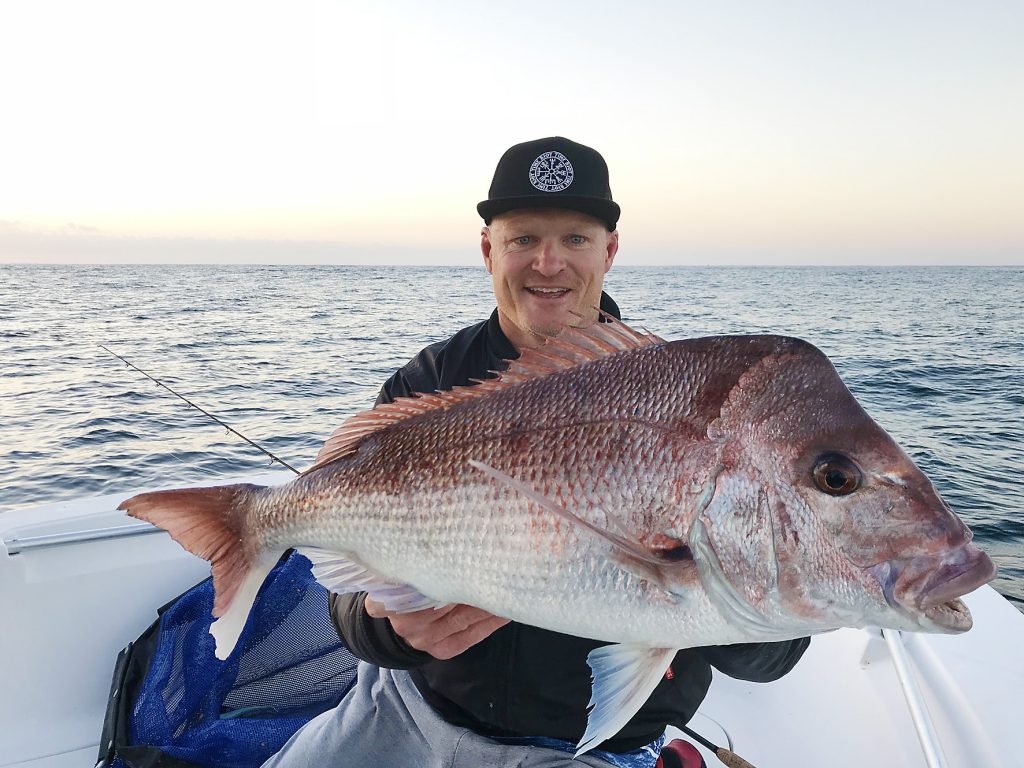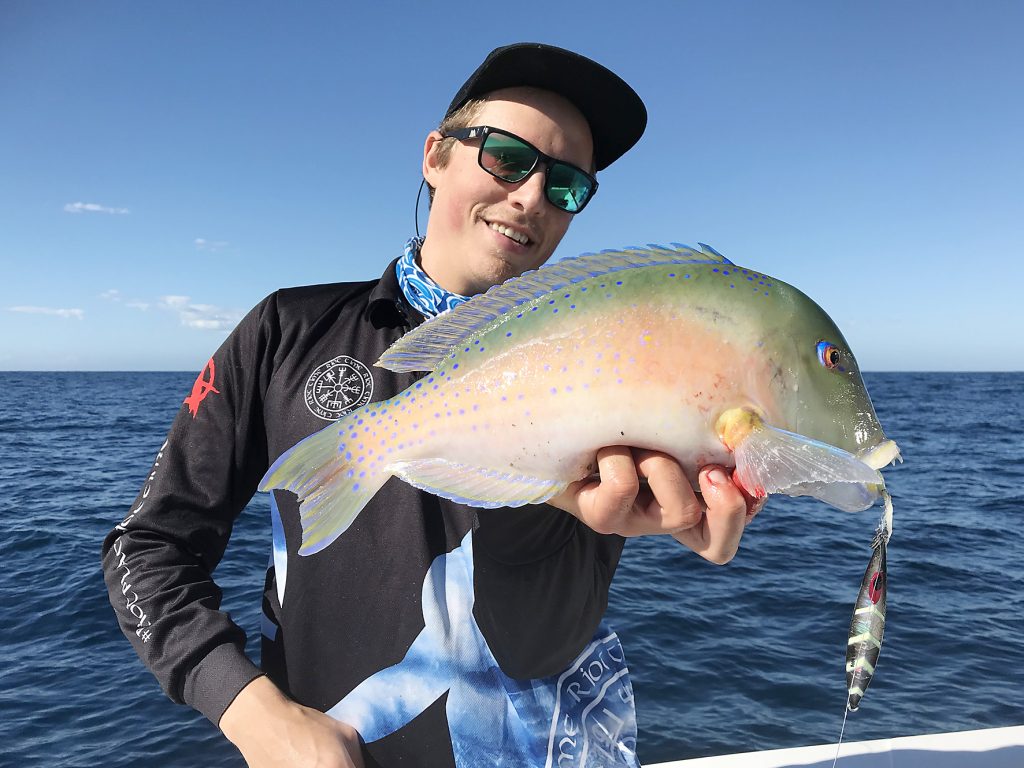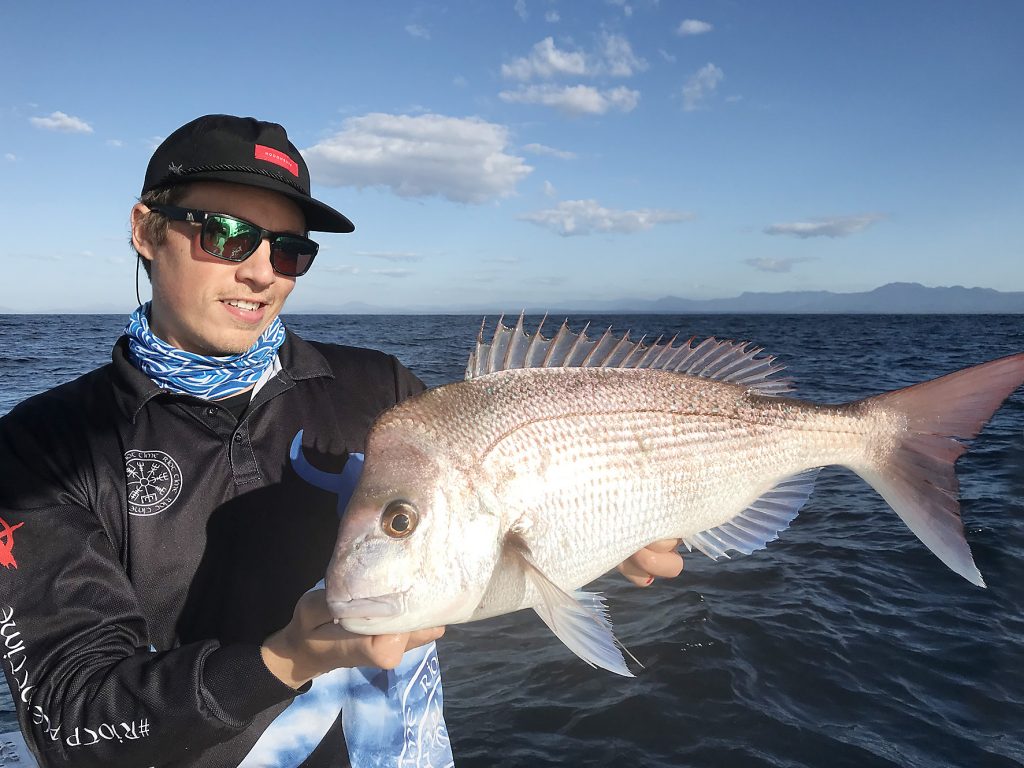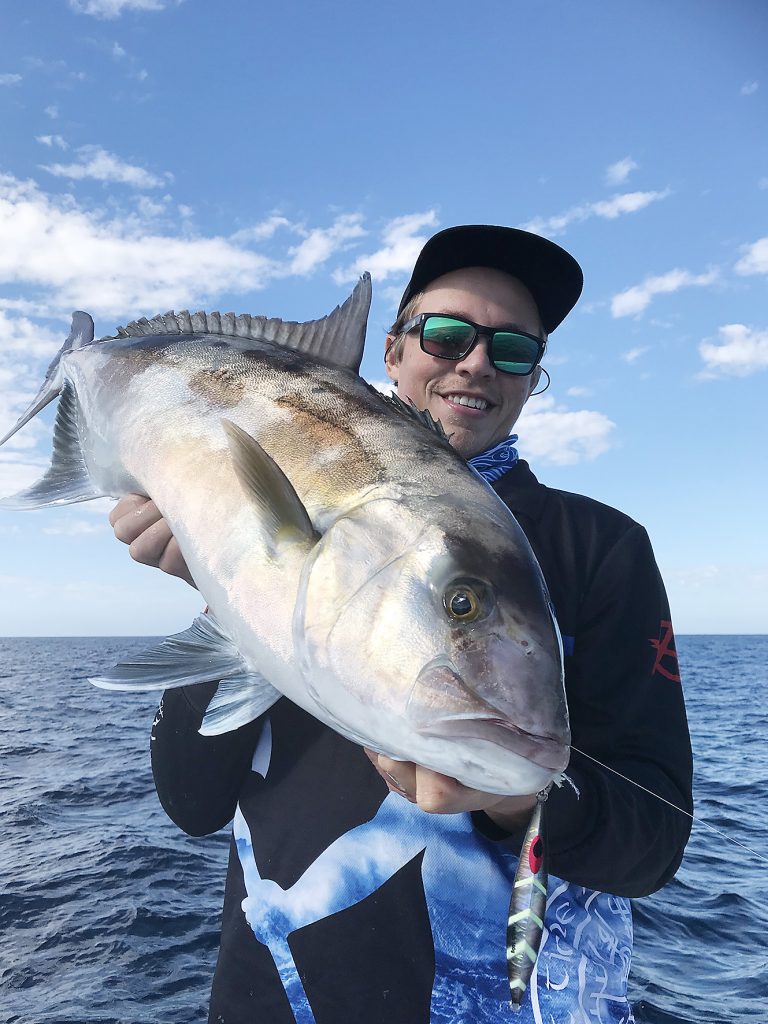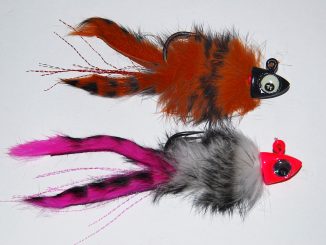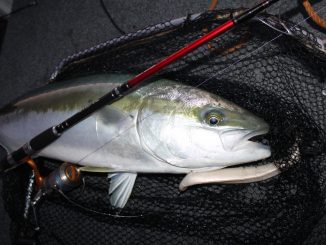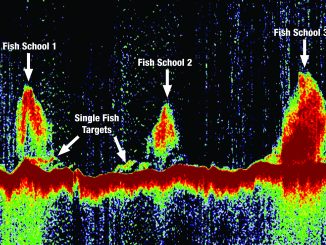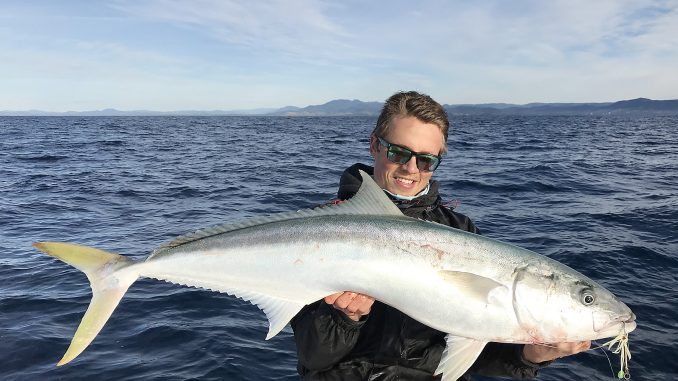
by Elii English •
The technique of jigging has been around as long as people have been catching fish, although modern jigging has evolved substantially since then. Whether you’re targeting back breakers in the depths of the abyss, or inshore pinnacles and reefs for a variety of table fish, the technique of jigging can be applied to almost every offshore scenario, with styles of jigs and techniques constantly evolving! These techniques have been proven to be highly effective on the inshore and offshore reefs of this great country.
When starting out offshore jigging, the range of jigs, tackle, reels and rods can be overwhelming; especially with today’s market of fishing gear available. There are so many situations where a jig can be highly successful, such as schooled up kingfish in deep water or shallow water, micro-jigging for species such as snapper and pearl perch just to name a few. In this article I will explain the basics of offshore jigging to give you a starting point to navigate this particular style of fishing. Hopefully it will land you some dinner or maybe even a trophy!
Techniques and Style
There are several dozen styles of jigs out there but they can be narrowed into two overarching techniques: mechanical/knife jigging and slow/fall style jigging. Each style can be used in a variety of scenarios or for a variety of species, however some styles are better suited to a particular species than others.
Slow/fall jigging
Slow/fall jigs are best for inshore pinnacles and table fish, but can also used be for larger pelagic or sportfish, depending on conditions. This technique is generally used in depths between 15-60m, with species such as snapper, pearl perch and mulloway responding well to jigs in this depth.
Make use of your plotter and sounder to look for pinnacles, bait balls and ledges in this depth range. When you approach the reef, avoid motoring directly on top of where you intend to fish. Species such as snapper and mulloway are known to be shy, and the sound of the motor generally shuts them down in shallow waters.
Give your intended spot a wide berth, figure out what angle you’re drifting, then make your drift. Anything over 1 knot is considered a relatively fast drift, and you may need a sea anchor to slow you down, however if you don’t have one sometimes just stepping up the jig weight can help.
Anchoring should be avoided, as this causes you to fish vertically, reducing the area in which you fish. Drifting enables you to cover as much ground as possible, and is therefore considered superior and more effective.
When it comes to the technique, it can differ from day to day, but reading your sounder is a key factor. If the fish are sitting high on the sounder, simply match that depth with the retrieve of your jig.
A slow fall jig works best with an outwards roll with the wrist, moving the rod back towards your body, picking up the slack and repeating. You’ll find it easier to repeat this action before you have contact with the jig (while your line is slack), otherwise you’ll just be dragging it through the water rather than ‘jigging’ it.
Snapper, pearl perch and mulloway will generally feed on the ocean floor, so keep your jig down there! Keeping the jig in the bottom third of the water will help target these fish. Moving the jig upwards from the bottom to the top third of the overall water depth, then dropping it back down is most effective. For example, if you’re fishing in 15m of water, start your jig on the bottom and jigging it up 5m off the bottom before dropping it back. This takes practice, but there’s no point fishing 15m under the boat when you’re fishing a 50m pinnacle and the fish are on the bottom.
Current and wind should be taken into account when drifting. Having a wide range of weights in your bag is key! Generally in 15-30m of water, jigs could range from 20-60g, depending on the strength of the current and wind speed. In depths of 40-60m, between 80-120g is essential. You want a slow fall, but not so slow that you’re not getting to the mark on time. If the current and wind are strong and in the same direction, stepping up your weight will be necessary, as this will almost double your drift speed depending on the day.
In terms of outfits, this technique has some more options compared to mechanical and knife jigging, and with light line and lighter rods you can have a lot of fun. Thin PE braids are essential. PE 1.5-3 is perfect. You can either use a spin set up around the 5000 size or a small overhead, preferably with a jigging handle. Match the rod to what PE line you’re using. The length is up to you and what you’re comfortable with. If you’re new to fishing, starting with a rod around 6’3” is ideal.
Mechanical/knife jigging
Mechanical/knife jigging can be an effective but more difficult style for the NSW coastline and other parts of the country. The technique is mainly used in deeper water when fishing reefs and shoals. These jigs are better in 60-100m of water for larger sportfish such as kingfish, amberjacks and samsonfish, but you can still catch snapper and other common reef species on these larger style jigs in deep water.
In these depths, the minimum weight that should be used is somewhere between 150-300g, depending on the current and wind speed. Some days, however, you will find an 80-100g jig will work as well. It’s always good to have a few options in your bag and some back-ups in case you get smoked!
When fishing for kingfish, amberjacks and samsonfish, sounding them is key. If your sounder isn’t showing feeding fish off the bottom or mid-water, you’re going to have a very sore back by the end of the day, as dropping too many jigs down can be painful. Focus on finding the fish rather than fishing hard. On these deeper reefs the fish are not so prone to being motor shy. This means you can do a few runs over a spot to figure out where they’re sitting before doing a drift.
When targeting these fish, it’s always a good idea to have live bait on board. In deep water, a live bait will find the fish faster than a jig, and once you’ve found them, send the jigs down. This technique can be a game changer, as you can find fish faster and save your arms.
When it comes to the technique, it can differ depending on what the fish are feeding on and how aggressive they are at the time. Starting off with a fast jig is always best. Drop your jig to the bottom and have a constant jig to the top. As with slow jigging, try to jig the rod with slack line. This saves your back, because you’re not dragging the heavy jig through the water.
Some days the fish may be timid, and a slower jig technique with more action will be most effective. When the fish are like this, it’s always a good idea to have some heavy slow fall jigs in your bag.
Similar to slow jigging, you should only fish the zone where fish are showing on your sounder. Fish smarter, not harder!
You should always pay attention to your drop, as many fish will take a jig while it’s falling. You can either pinch the line to feel it on the descent, or just watch the spool. If you see a sudden stop and you’re not on the bottom, or the line starts peeling off much faster, you’ve probably hooked up!
Because these fish are larger and fight hard, you’ll need a half decent set-up to stop them and make the jigging a little less painful. It all comes down to what weight you’re using and what fish you’re chasing. If you’re just getting into it, a 10,000 sized reel (depending on the brand) with a slow gear ratio will be best. Because a 10,000 or bigger reel has such a big bail arm, it grabs a lot more line than smaller reels with the same gear ratio are able to. Look for something around a 5:2.1 or 6:2.1. You’ll want to be fishing a PE 5-8 line, so look for something that has the capacity to hold enough line in deep water and enough line to fight a fish.
Match the rod with the PE line and jig weight you’re using. Look for something a touch shorter than your slow jigging rod, as there is less movement of the jig needed. Generally between 5’6”-5’10” is perfect and ensures you don’t overwork your back!
Conditions and reading the fish
Weather conditions and tide play an important role in offshore fishing. Obviously, the swell and wind can stop you from reaching deep water spots, but more importantly, tide, moon phase and atmospheric pressure can make a significant difference to your day.
Tide is most important, as almost all offshore species like a run-in tide or a tide change. Snapper, mulloway and kingfish are most responsive to an incoming tide and tide change. They bite hard on the run-in, and some of my best offshore jigging days have been on a run-in tide up to a tide change. Being where you want to be on that incoming and tide change is very important.
Being familiar with multiple fishing locations is also important. Fish might be shut down on one reef, but biting hard 2km away on another reef. Therefore, it’s always a good idea to have a few locations in play if your first doesn’t work out.
You can fish at any time of day, as long as you’re in the right depth for that time of day. Starting in the mornings in 15-30m and progressively moving to deeper spots every hour or two (depending on the target species) is an effective approach. Keep working deeper and you’ll find the fishing will stay hot, but if you stay in shallow it might shut down. If you’ve caught fish in a spot early in the morning and it starts to shut down, simply move to a deeper mark.
Reading the tides and having a plan around tide changes can change an average day offshore to an exceptional day. A good tide is usually complemented by a good moon phase as well. Snapper are the most affected by a full moon, and they can shut down during the day. Mulloway, on the other hand, can favour a full or new moon, as these bring big tides and a good tide change.
It’s no secret that most fish like a rising or high barometer reading. Some species can be highly-affected by a sudden drop or low air pressure. For example, mulloway and snapper will shut down in a low pressure system, so when the weather favours a good day offshore but the barometer is low, start deeper than you usually would. This can improve your catch rates and your day.
Jigs and Accessories
There is such a wide range of jigs on the market these days, it can be hard to select a handful and build a set that will suit your needs. Three major factors should be considered when selecting a jig: colour quality, concave design and the terminal tackle you get with the jig, depending on the style of jig you are buying.
The quality of the paint and the actual colour itself is always important. Unfortunately, you can only know the quality of the paint from word of mouth, reviews or when you use the jig. You want the lifespan of your jig to be worth it, without the paint chipping or fading too soon. This will eventually catch you more fish and save you time and money.
When selecting a colour, you essentially want to match the hatch, which simply means to match what your target species is feeding on. If you’re slow jigging for snapper, pearl perch and mulloway, there are three main colour choices: pink, blue and lumo. Look for the ones with lots of flash.
For knife jigs, I use the same colours, with a touch more silver or green. You want to pay attention to the back side of the jig, as some brands will cheap out and only paint half the jig to keep their production costs low.
Secondly, for slow jigging, look for a jig designed with a nice concave curve on either side of the jig. These will be grooves or crosses in the jig, giving it a flutter action on the sink, which is ideal. This isn’t necessary when selecting a knife jig, however, as you want the jig on the bottom and back up as quickly as possible.
When it comes to terminal tackle for slow jigs, you want to look for dual hooks. Assist hooks can be expensive if the jig doesn’t come with them.
Anything with extra flash on the hook is almost essential when slow jigging. Tying your own flash on with thread works really well, and even adding a lumo squid skirt can almost double your catch some days, especially in deep water where the extra attraction works really well. This isn’t as important for bigger knife jigs, as the added flash or skirt can drag through the water when jigging, making it harder to work.
After a full day you will notice the difference to your arms. Look for strong hooks with the knife jigs; most come with decent hooks. Anything with 200lb plus Dacron is necessary.
Finally, always remember to have confidence in what you use. If you’re ever wondering what you’re doing wrong or just want some handy hints, remember you can jump straight onto YouTube and check out heaps of footage!
Conclusion
A good day jigging can be some of the most fun you can have on the water, with multiple hook-ups on big kingfish, snapper, and other monsters from the deep. Fishing is all about flexibility, so remember to read the weather conditions on the day and be ready to adjust your fishing locations and strategies.
Just because you have had success with a particular technique before, doesn’t mean it will work again. Consider your target species, the depth you’re fishing in and the type of jig you’re using. Practice with different styles of jigs and jigging techniques, and if something isn’t working, switch it up
Have fun and always remember to set those hooks!

